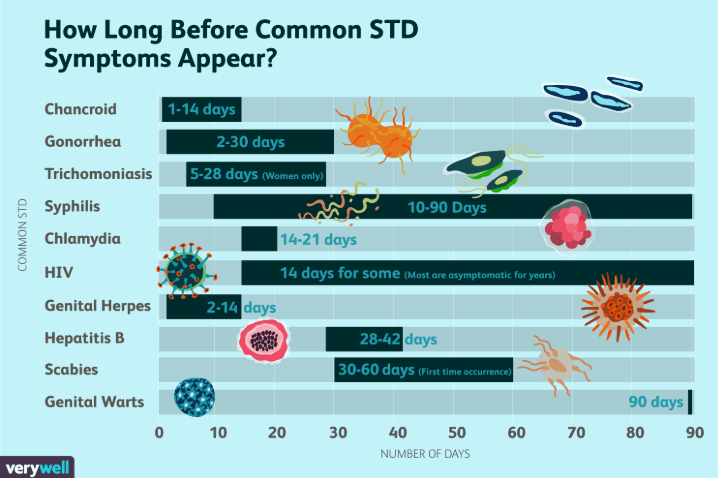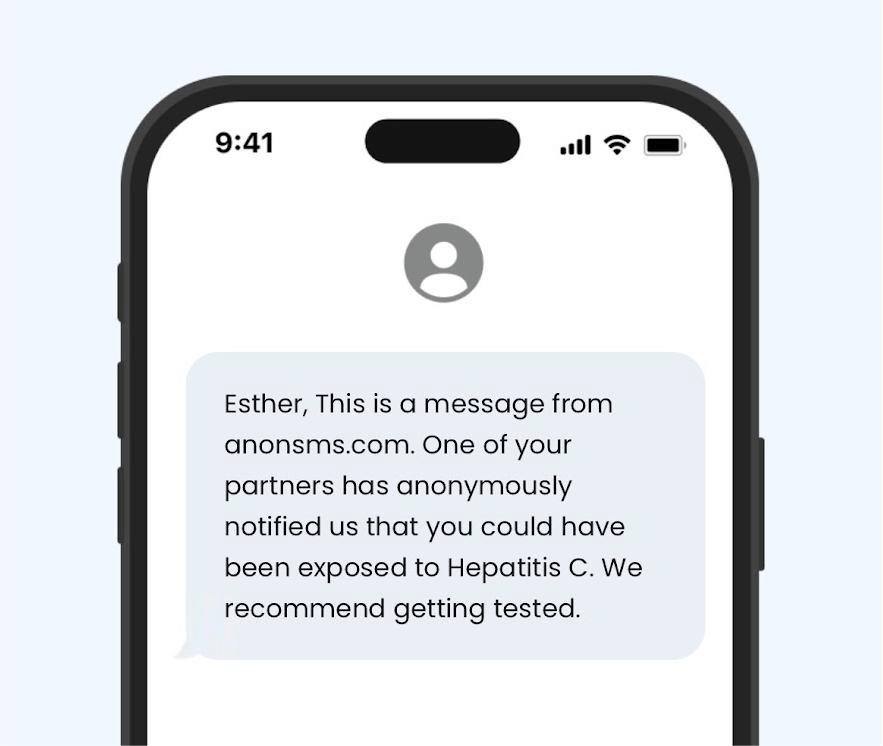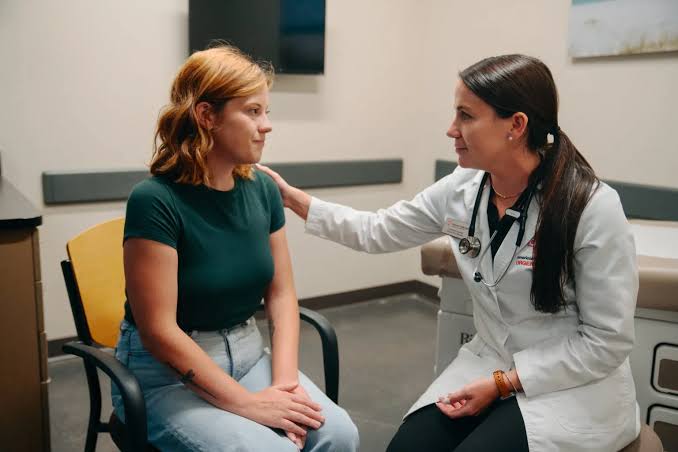Je zodpovědné nechat se často testovat na pohlavně přenosné choroby, zvláště pokud máte více partnerů. Důležité ale je i načasování. Jednou z častých chyb, které se lidé dopouštějí, je spěchat do lékařského centra, aby se nechali okamžitě otestovat, když měli nechráněný pohlavní styk nebo zjistili, že mohli být vystaveni pohlavně přenosné chorobě.
Jde o tohle: Tělo si potřebuje na čas, aby si vyvinulo detekovatelné příznaky infekce. Může se jednat buď o produkci protilátek k boji s infekcí, nebo o to, aby se bakterie a viry rozmnožily na úrovně, které lze identifikovat testy. Klíčem k tomu, kdy se nechat otestovat na pohlavně přenosné choroby, je tedy pochopení „období okna“ pro různá onemocnění.
V tomto příspěvku se zaměříme na tzv. „okenní období“ (tzv. „okno pro případné výskyty pohlavně přenosných chorob“), abychom vám pomohli činit informovaná rozhodnutí o vašem zdraví. Také vám poradíme, jak nejlépe informovat svého partnera, pokud je výsledek testu pozitivní.
Co je to období testování na pohlavně přenosné choroby?
Období testovacího okna na pohlavně přenosné choroby je jednoduše doba mezi potenciální expozicí pohlavně přenosné chorobě a dobou, kdy ji test dokáže přesně odhalit. Představte si to jako zasazení semínka – i když rostlinu hned nevidíte, pokryjte zemi, dejte jí čas a ona vyroste.
Tato čekací doba existuje proto, že vaše tělo musí reagovat na infekci. U krevních testů, které hledají správné protilátky k vyléčení infekce, potřebuje váš imunitní systém čas na rozpoznání infekce a produkci těchto protilátek. U jiných testů (jako jsou testy moči a stěrů), které detekují skutečné bakterie nebo virus, potřebuje infekce čas na to, aby se rozmnožila natolik, aby ji test dokázal přesvědčivě zachytit.

POZNÁMKA: Pokud se necháte otestovat během inkubační doby pohlavně přenosných chorob (tj. kdy infekce ještě neroste), můžete dostat falešně negativní výsledek. To znamená, že výsledek testu říká, že nemáte infekci, zatímco vy ji máte – infekce stále roste.
Takovéto jednání je nebezpečné, protože si myslíte, že včasným testováním prospějete sobě i svému partnerovi, ale není to tak. Nakonec si budete myslet, že jste v bezpečí, a nemoc šíříte na ostatní.
Běžné menstruační období pohlavně přenosných chorob, které byste měli znát
Prohlášení o vyloučení odpovědnosti: Tyto informace slouží pouze pro vzdělávací účely a vycházejí z obecných pokynů z renomovaných zdrojů, jako jsou NCBI a CDC. Uvedené doby trvání léčby jsou odhady. Vždy se poraďte se zdravotníkem, který vám poskytne individuální rady ohledně kdy se nechat otestovat na pohlavně přenosné choroby.
Jak brzy po expozici je třeba provést test na pohlavně přenosné infekce, se výrazně liší v závislosti na konkrétní pohlavně přenosné infekci. Některé lze detekovat během několika dní, zatímco jiné se přesně projeví až za týdny nebo dokonce měsíce.
Zde jsou některé běžné pohlavně přenosné infekce a jejich odhadovaná doba přenosu:
Chlamydie a kapavka
- Období okna: Tyto bakteriální infekce lze detekovat přibližně 1–2 týdny po expozici. Po uplynutí této doby jsou testy moči a stěry vysoce přesné.
- Zdroj: Národní centrum pro biotechnologické informace (NCBI)
Syfilis
- Období okna: Okno pro syfilis je přibližně 3 týdny až 3 měsíce po expozici. Krevní testy jsou nejpřesnější – hledají protilátky, jejichž vývoj trvá nějakou dobu.
- Zdroj: CDC (Centrum pro kontrolu a prevenci nemocí)
HIV
- Období okna: Liší se podle typu testu. Testy na antigeny/protilátky jej dokáží detekovat přibližně za 2–6 týdnů. Testy na protilátky mohou někdy trvat až 3 měsíce.
- Zdroj: CDC (Centrum pro kontrolu a prevenci nemocí)
Herpes (HSV-1, HSV-2)
- Období okna: Docela ošemetné. Krevní testy jsou nejpřesnější přibližně po 4–6 týdnech, ale někdy může trvat až 4 měsíce, než se dostaví přesné výsledky. Nejpřesnější je testování aktivního boláku.
- Zdroj: Národní centrum pro biotechnologické informace (NCBI)
Jaká je nejlepší akce pro testování?
Zde je podrobný návod, jak se nechat otestovat na pohlavně přenosné choroby:
Krok 1: Nepanikařte
Pocit obav nebo úzkosti po zjištění, že jste se mohli nakazit pohlavně přenosnou chorobou, je normální. Každý se chce ujistit, že je zdravý. Začněte tím, že se zhluboka nadechnete a nepropadejte panice. Určitě vás zaujme, že většina pohlavně přenosných chorob je léčitelná a mnoho z nich je s řádnou lékařskou péčí vyléčitelných.
Krok 2: Promluvte si s lékařem
Toto je nejdůležitější krok. Nespokojte se jen s tím, co jste si přečetli zde nebo slyšeli jinde. Promluvte si s lékařem, který vás posoudí, zváží faktory, jako jsou příznaky (pokud existují), typ infekcea vaši anamnézu. Doporučí vám nejvhodnější postup vyšetření.
Krok 3: Zvažte počáteční a následné testování
Váš lékař může doporučit nechat se občas otestovat po několika týdnech nebo měsících, abyste si byli jisti. Tento přístup pomáhá odhalit infekce, které jsou detekovatelné včas, a zároveň zajišťuje, že infekce, které se objeví později, nebudou přehlédnuty. Můžete se například nechat otestovat 2 týdny po expozici a znovu za 3 měsíce, v závislosti na odhadovaném období přenosu pohlavně přenosných chorob.
Krok 4: Používejte ochranu
Dokud vy i váš partner/partnerky nepodstoupíte test a neznáte svůj zdravotní stav, vždy před pohlavním stykem používejte ochranné pomůcky, jako jsou kondomy. Tím ochráníte sebe i své partnery před možným přenosem. Je to jednoduchý krok, který může v budoucnu zabránit mnoha komplikacím.
Také je důležité, abyste se po skončení s novým partnerem podrobili testům, abyste si byli jisti zdravotním stavem toho druhého.
Další zodpovědný krok: Komunikace
Nechat se otestovat ve správný čas je prvním klíčovým krokem k převzetí kontroly nad svým sexuálním zdravím. Dalším krokem po obdržení výsledku testu a zjištění vašeho statusu (pokud je pozitivní) je sdělit to svému partnerovi. Chápeme, že najít správná slova k vyjádření může být obtížné, ale to by vás nemělo zastavit. Je důležité, abyste jim to řekli, aby si mohli domluvit, kdy se nechat otestovat na pohlavně přenosné choroby, aby si byli jisti, a aby se (pokud je to nutné) léčili.

Pokud vám přímá konverzace přijde obtížná, můžete použít Řekněte svému partnerovi – online služba, která vám umožňuje odeslat anonymní textovou zprávu STDJe to zodpovědná a bezstresová varianta, která zajistí, že váš partner dostane důležité zdravotní informace, které potřebuje, a zároveň zachová vaši identitu zcela v soukromí.

 Anonymy
Anonymy
 Řekněte svému partnerovi
Řekněte svému partnerovi




